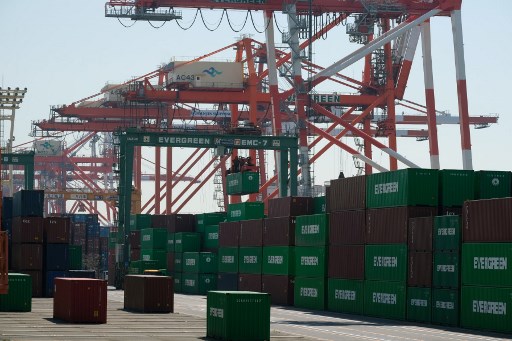
403
Sorry!!
Error! We're sorry, but the page you were
looking for doesn't exist.
EU imports from Russia decrease fivefold after Ukraine-related sanctions
(MENAFN) Eurostat, the European Union's statistics agency, has revealed a nearly fivefold decline in imports from Russia into the EU following the imposition of Ukraine-related restrictions last year.
According to the latest figures from Eurostat, seasonally adjusted values demonstrate that Russia's portion of EU imports from outside the bloc dropped from 9.5 percent in February 2022 to 2 percent in September 2023. Similarly, the EU's exports to Russia decreased from 3.8 percent to 1.4 percent during the same period.
Eurostat highlighted that the highest trade deficit with Russia was noted in March 2022 at €18.6 billion, largely due to elevated energy product prices. However, this deficit has notably reduced since then. Trade deficit refers to the amount by which the value of imports surpasses that of exports for a country.
The EU's major imports from Russia encompassed natural gas, petroleum oils, nickel, iron and steel, and fertilizers, comprising about two-thirds of total imports from the sanctioned nation. While Russia's share in these imports notably declined, the EU increased its procurement of natural gas and petroleum oils from the US, Norway, Algeria, and Saudi Arabia. The US expanded its contribution to nickel supply, and China emerged as the principal supplier of iron and steel.
Regarding fertilizers, Eurostat highlighted a different trend. Russia's share in extra-EU imports decreased by almost a third in 2022 but rebounded to its pre-sanctions level of 27 percent from July to September this year.
According to the latest figures from Eurostat, seasonally adjusted values demonstrate that Russia's portion of EU imports from outside the bloc dropped from 9.5 percent in February 2022 to 2 percent in September 2023. Similarly, the EU's exports to Russia decreased from 3.8 percent to 1.4 percent during the same period.
Eurostat highlighted that the highest trade deficit with Russia was noted in March 2022 at €18.6 billion, largely due to elevated energy product prices. However, this deficit has notably reduced since then. Trade deficit refers to the amount by which the value of imports surpasses that of exports for a country.
The EU's major imports from Russia encompassed natural gas, petroleum oils, nickel, iron and steel, and fertilizers, comprising about two-thirds of total imports from the sanctioned nation. While Russia's share in these imports notably declined, the EU increased its procurement of natural gas and petroleum oils from the US, Norway, Algeria, and Saudi Arabia. The US expanded its contribution to nickel supply, and China emerged as the principal supplier of iron and steel.
Regarding fertilizers, Eurostat highlighted a different trend. Russia's share in extra-EU imports decreased by almost a third in 2022 but rebounded to its pre-sanctions level of 27 percent from July to September this year.

Legal Disclaimer:
MENAFN provides the information “as is” without warranty of any kind. We do not accept any responsibility or liability for the accuracy, content, images, videos, licenses, completeness, legality, or reliability of the information contained in this article. If you have any complaints or copyright issues related to this article, kindly contact the provider above.
Most popular stories
Market Research

- Manuka Honey Market Report 2024, Industry Growth, Size, Share, Top Compan...
- Modular Kitchen Market 2024, Industry Growth, Share, Size, Key Players An...
- Acrylamide Production Cost Analysis Report: A Comprehensive Assessment Of...
- Fish Sauce Market 2024, Industry Trends, Growth, Demand And Analysis Repo...
- Australia Foreign Exchange Market Size, Growth, Industry Demand And Forec...
- Cold Pressed Oil Market Trends 2024, Leading Companies Share, Size And Fo...
- Pasta Sauce Market 2024, Industry Growth, Share, Size, Key Players Analys...





















Comments
No comment